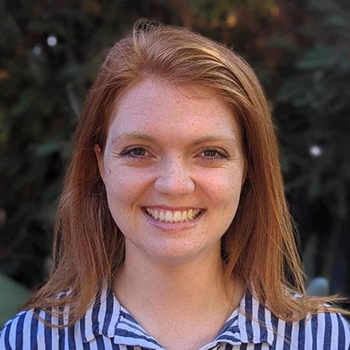
Packard Fellowship Winner is Changing the Way We Think About Flight
How UM alumni Christina Harvey is planning to use her BIRD lab to explore maneuverability in aircraft design

How UM alumni Christina Harvey is planning to use her BIRD lab to explore maneuverability in aircraft design

Michigan Aerospace alumna, Dr. Christina Harvey, has recently been named one of the recipients of the highly esteemed Packard Fellowship. This fellowship is awarded to twenty early-career professors, each receiving $875,000 of unrestricted funds over the next five years to pursue “blue-sky” research, and provide an opportunity to establish their lab and research. Over the past 35 years, the Packard Foundation has contributed nearly $500 million to support over 695 scientists and engineers from 54 universities.
“It makes me feel wonderful that there are people out there that agree that there is value to be had from understanding animal locomotion. There is a whole world of bio-inspired people out there, and that community is very supportive,” commented Harvey on receiving the Fellowship.
Dr. Harvey currently serves as an Assistant Professor at UC Davis, leading the Biologically-Informed Research and Design (BIRD) lab. The BIRD lab, under Dr. Harvey’s leadership, studies how, when, and why animals fly through both biological and engineering principles, with the goal of enhancing and improving the future of aircraft designs. The primary focus is on studying maneuverability and how birds navigate complex environments, maneuver around moving objects, and navigate through obstacles. “The way I like to view the work that I do, is that we are trying to understand how birds fly so that we can improve aircraft design,” Harvey explained.
Harvey initially earned her undergraduate degree in mechanical engineering at McGill University in Montreal, before pursuing a unique academic journey. After a fifth year dedicated to studying aircraft, she obtained her masters degree in Zoology at the University of British Columbia (UBC) in Vancouver, working in a bird flight lab under the guidance of Dr. Douglas Altshuler. This experience led her to pursue a PhD at the University of Michigan, focusing on bird flight aerodynamics and control under the mentorship of Dr. Daniel Inman. “This work seemed cool to me because there are so many unknown physics in aerodynamics and it feels like you are pushing the frontiers of our understanding of the natural world as an engineer.”
At U-M, Harvey’s research centered on understanding how birds utilize their elbows and wrists for flight control, with the ultimate goal of exploring new aircraft designs. She emphasized the significance of comprehending the impact of extending the elbow or wrist on the aerodynamic forces involved in bird flight. Following the completion of her PhD last year, she accepted her current position with UC Davis.
“It is fun for my students too because I can ask them what they want to study that is related to bird flight and almost any question is open. There are a couple of labs doing it and a lot of great advancements have been made but when you talk about aerospace, there are so many labs studying specific parts of an aircraft or specific characteristics. There are maybe 20 labs studying bird flight so the questions that you can ask are very broad and it really lets students feel like they are responsible,” Harvey stated. “That is something Dan did for me, allowed me to lead my research and feel like it was my work and my decisions while he was still there making sure things were still going in the right direction. That is now what I try to do with my students too.”
Harvey also works with the California Raptor Center, an educational and research facility dedicated to the rehabilitation of injured and orphaned birds of prey. Here, Harvey has the unique opportunity to work with a variety of different bird species and plans to tie in the filming of live birds in flight into her research. Thanks to her partnership, and the ability to have access to the wind tunnels at the university, she has successfully 3D printed wing shapes from real birds and tested them in the wind tunnels. With this research, her team has collected force data to try to predict what they see birds doing in terms of forces and the flight styles they are using.
Thanks to the Packard Fellowship, Dr. Harvey plans to delve into how to transition biological maneuverability to engineered systems in flight. This shift will enable her team to quantitatively analyze bird maneuvers and their implications for aircraft design. “There are lots of different things we are excited to use this Fellowship for, but the most exciting is being able to use it in a way that lets me train more students and build towards this fundamental understanding of maneuverability.”
Visit the BIRD Lab website to learn more about Dr. Harvey, the lab’s work, and ways for students to get involved.
BIRD lab website: https://birdlab.notion.site/BIRD-Lab-b60537aaf85f4de9ada3a5088549d84c